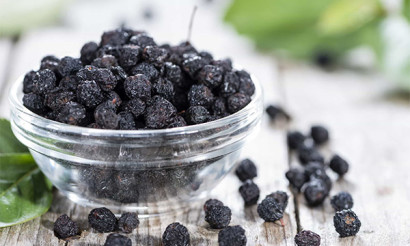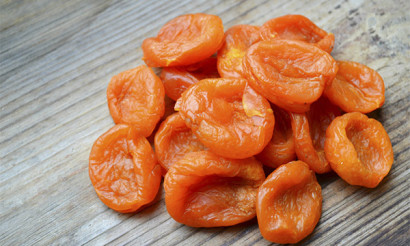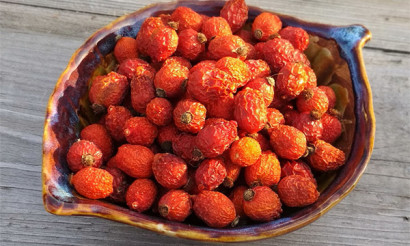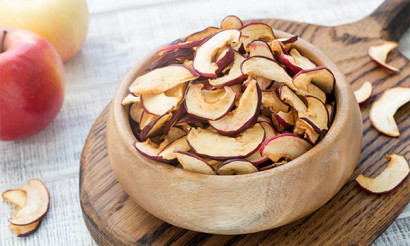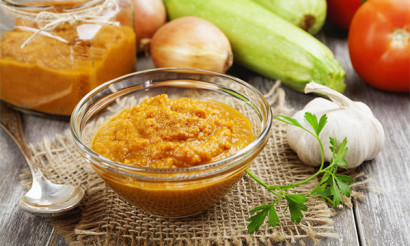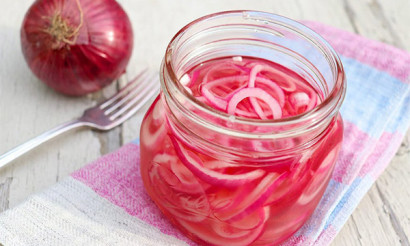How to freeze eggplant for the winter: 6 ways
Freezing eggplant allows you to store more nutrients in it than during conservation. But there are several subtleties and nuances that you need to know. For example, a vegetable has a characteristic taste, is completely devoid of its own aroma, but it perfectly absorbs all the surrounding odors.
- How to choose eggplant
- Preparation of vegetables for freezing
- How to freeze eggplant for the winter
- Fresh whole / sliced
- Blanched
- Dried
- Fried
- Boiled
- Braised
- How to defrost properly
- What can be prepared from frozen eggplant
- Fried potatoes with eggplant
- Eggplant Stew
- Buckwheat with eggplant
- Eggplant stewed in sour cream
- Moussaka
- Bulgur with eggplant
- What are eggplants useful for?
How to choose eggplant
Preparation for freezing begins with the choice of a vegetable. It is important to do this correctly so as not to encounter surprises after defrosting. You need to choose completely ripe vegetables, which are easy to determine by the rich purple color. Their skin should be shiny and clean, not have any physical damage. There should also be no dents.
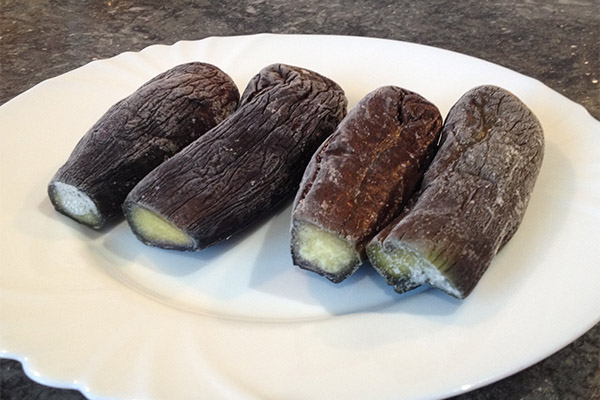
Note! Over time, harmful substances can accumulate in eggplant, so young vegetables should be preferred.
Another important parameter - they should not have green spots that indicate the presence of a dangerous poison inside. If the vegetables lie against the sun for a long time, even in the young blue ones, solanine begins to be produced, which is dangerous for humans. Therefore, it is better to buy vegetables that are sold indoors.
If, after an incision, the eggplant flesh begins to quickly darken, it means that a lot of serotonin has accumulated in it, and such a vegetable is also not suitable for freezing.
Preparation of vegetables for freezing
Preliminary preparation does not take much time, but this is a very important stage, without which the taste of blue will be bad. Eggplants can be frozen in different ways, but for all methods there are general rules that must always be followed. The first concerns the freezer. The temperature inside should be at least 12 degrees below zero. At this temperature, eggplant can retain its unique taste and beneficial properties for 12 months.
You can keep the little blue ones in the freezer only in sealed packaging, otherwise they will absorb the aromas of the products that are nearby. If this is a plastic bag, then the vegetables should be tightly wrapped so that no air remains inside. But it is additionally recommended to remove all products with a strong smell away from eggplant. This is especially true for greenery.
The obligatory process is soaking the vegetable in salt. He is needed to get rid of the bitterness that is inherent in eggplant. Usually a saline solution is prepared in which the eggplant is kept. Sliced vegetables are easier to sprinkle with salt and leave for a while, until they let the juice.
How to freeze eggplant for the winter
Each method has its own characteristics that should be considered.
Fresh whole / sliced
It is not recommended to freeze eggplants in this way, because the taste is so quickly lost and the appearance deteriorates. But if you need to freeze for a short period of time, then this will be a good option.
First you need to prepare the vegetables - peel and cut the twigs. Then draw water into a deep container (so that the eggplant fits entirely) and put 2 tbsp. tablespoons of salt. Next, place the vegetables in this solution and let stand for 20-30 minutes. Now wash them under running water, removing the remaining salt, then put them on previously prepared towels, and cover them with napkins or another towel.
While the eggplant is drying, you need to prepare any board or small baking sheet, put on top of foil or baking paper. When the vegetables are completely dry, put them on a prepared appliance and put in the freezer for 60 minutes.At the same time, it is advisable to remove other products from the chamber for this time so that the smells are not transmitted to the eggplant. After the time, get the little blue ones and wrap each one with cling film. You can use a plastic bag, but you need to release all the air.
It is better to store in a freezer in a plastic container for food - this is a fairly sealed container, so you can not worry about the quality of the products.
For easy storage, the eggplant can be cut into any convenient pieces. Most often these are half rings or cubes. Vegetables should be lined with a thin layer, then sprinkled with salt and wait until the juice begins to stand out. Then rinse and dry them thoroughly, then freeze them in the freezer for 20-30 minutes and pack them, like whole vegetables. Pieces are more convenient to store in plastic bags.
Blanched
Blanching is a short-term processing of vegetables with boiling water. Using this method, preparing blue ones for freezing is much faster. Rinse the vegetables and cut into any convenient slices. Pour water into a saucepan, add a little salt and bring to a boil, then throw eggplant there and let stand for 3 minutes. If the pieces come up, they need to be crushed with a spoon.
While the vegetables are blanched, prepare a container for cooling. It can be a basin or another pan with cold water and ice. Now put eggplant there and wait until it cools completely, then drain the liquid through a colander. From above it is desirable to crush the eggplant with a plate with a load, so that the water flows faster. Then dry, transfer to a storage container and place in the freezer. The main advantage of this method is that preliminary freezing is not required.
Dried
Dried eggplants turn out to be much tastier and retain their taste even longer after defrosting. First you need to prepare vegetables - wash, remove ponytails, etc. It is also desirable to remove a thin layer of peel. Next, cut the eggplant in any convenient way, but preferably in rings. Then put them on a baking sheet in one layer and place in an oven preheated to 50 degrees, leaving the door ajar. Dry vegetables for 60 minutes. If there is a fan in the oven, then it is better to turn it on. You can also dry the eggplant in a vegetable dryer by covering it with foil and choosing the appropriate mode.
Finished pieces need to be cooled to room temperature, transferred to an appropriate container and placed in the freezer without preliminary freezing.
Fried
Frozen fried eggplant is a great opportunity to surprise guests on New Year's Eve, hardly any of them expects to see this vegetable on the table. It is also a quick snack - it is enough to defrost a dish, warm it up, decorate with mayonnaise and serve.
Eggplants need to be washed, cut the stem, dry, then cut into thin rings. Then salt the vegetables (1 kg - 1 tbsp.spoon of salt) and mix well with your hands to stretch the bitterness. After 30 minutes, when moisture emerges, rinse the eggplants under running water and wipe with a towel.
Heat the pan, add vegetable oil there and fry the blue ones on both sides until tender. Everyone adjusts the degree of roasting to their taste.
Remove excess fat from prepared vegetables. It is easier to do this by putting them temporarily on a towel or napkin. Then place them in the freezer and wait for the hardening. Now you can pack in airtight containers.
Boiled
Before cooking blue, you need to make several holes in the peel and soak them for half an hour in salt water. Rinse thoroughly with cold water. After that, drop the eggplant into boiling water - the cooking time depends on the size of the fruit. To determine that the eggplants are ready is simple - they will become wrinkled. If desired, they can be cut, but you need to do this while they are still hot. Next, cool the eggplant, pre-freeze, pack in a container and place in the freezer.
Braised
Eggplant needs to be prepared in the usual way and finely chopped into cubes. The optimal size is 2 × 2 cm.If desired, you can remove the peel. Then salt them, mix and let stand for half an hour, then wash and remove excess liquid.
Heat the oven to 180 degrees, place the vegetables in a baking dish and simmer for 15 minutes, stirring occasionally. It remains to cool the dish and transfer it to the container for storage.
You can still stew in a pan, cut into cubes, in vegetable oil until tender.
How to defrost properly
The first thing to remember is that you can freeze eggplants only once, so you should defrost a product in small portions as needed. Interestingly, some dishes do not require defrosting vegetables - you can throw in the pan directly with ice. There are two ways to properly defrost eggplants:
- At room temperature. Remove vegetables from the freezer and place in a deep container, waiting for complete thawing. But this process is not quick, so you can add warm water to the tank.
- In a refrigerator. A day before cooking, shift the vegetable from the freezer to the bottom shelf of the refrigerator. It is advisable to use a deep bowl, as there will be a lot of water. This method allows you to save the eggplant in its natural form, without damage.
What can be prepared from frozen eggplant
From the blue ones you can cook a lot of diverse, and most importantly - delicious dishes. They often become components of a dietary menu.

Fried potatoes with eggplant
Good and fast food that guests will appreciate. Despite frying in oil, the dish remains quite healthy thanks to the eggplant. To prepare you will need:
- 500 g of potatoes;
- 250 g eggplant;
- 1 onion;
- vegetable oil / salt / pepper to taste.
Thaw eggplants and warm to room temperature, if they are whole, cut into cubes or strips. Peel the potatoes and cut into strips. Onion cut into half rings. First fry the potatoes until golden brown, then add the onions, salt and spices. Fry the eggplants in a separate pan, add to the potatoes and simmer for 15 minutes.
Eggplant Stew
This dish is dietary because it contains a minimum of calories and a maximum of nutrients. To prepare you will need:
- 1 bell pepper;
- 1 carrot;
- 1 tbsp. a spoonful of vegetable oil;
- 300 g chopped eggplant;
- 1 onion;
- salt / spices to taste.
Cut eggplant into small cubes, pour into a deep container, sprinkle with salt, mix and leave for 15 minutes. Pepper and chop in any convenient way. Coarsely grate the carrots, and cut the onions into small cubes.
Make frying from onions and carrots, like on borscht. Rinse the eggplant, add to the pan with pepper. Add salt and spices to taste, mix, then cover and simmer for 20-30 minutes.
Decorate the stew on top with finely chopped greens. You can eat both cold and warmed up.
Buckwheat with eggplant
Buckwheat is useful in itself, but in combination with eggplant its benefits only increase. This is a hearty and tasty dish that cooks very quickly. The following ingredients will be required:
- 1.5 cups of buckwheat;
- 3 chicken eggs;
- 150 g of frozen eggplant;
- 2-3 onion heads;
- 4 tbsp. tablespoons of melted butter;
- salt / spices to taste.
First you need to rinse buckwheat under running water. It is better to do this several times. Boil porridge in salted water at the rate of 1 cup of cereal in 2 cups of water. In the finished buckwheat, add oil, spices and wrap so that it does not cool.
Now boil the eggs and cut them into small pieces. Defrost eggplants and fry in a pan until they become soft. Now you can add the onion and stew it with eggplant until tender. Then add the eggs and simmer for another 5 minutes, covering the pan with a lid. Mix vegetables with porridge and put in a closed container for 10-15 minutes in the oven to evaporate. Serve with sprigs of herbs.
Eggplant stewed in sour cream
This dish will be a good addition to the side dish and is perfect for a family dinner. To prepare, you need:
- 500 g of blue ones;
- 2-3 tbsp. tablespoons of flour;
- butter;
- fat sour cream;
- salt / spices to taste.
Defrost eggplants and completely get rid of excess liquid, then fry them in a frying pan without oil until golden brown. In another container, mix the flour with sour cream, salt and spices and fry in a separate container. Then mix the mixture with little blue ones and simmer in a pan for 15 minutes with the lid closed.
This recipe is good in that everyone can improve it. For example, with eggplant, you can fry 100-200 g of mushrooms, and add a little garlic or onion to the sauce.
Moussaka
This is a traditional eggplant dish in the Middle East. Ideal for a festive and ordinary table. Whole frozen eggplants are used. To prepare you will need:
- 800 g eggplant;
- 300 g of tomatoes;
- 800 g of minced meat (in the East they use lamb and beef);
- 1 onion;
- 300 g of hard cheese;
- 200 ml of dry white wine;
- spices / salt to taste.
- 0.5 l of milk;
- 2 chicken eggs;
- a piece of butter;
- 2 tbsp. tablespoons of flour.
First you need to make the sauce. To do this, melt a piece of butter in a pan and fry the flour in it. Heat milk to flour temperature, stirring slowly, pour into the pan. Add salt and spices to taste (in the East they use nutmeg). Bring the sauce in a pan to a boil and add 200 g of grated cheese there. Stir the liquid until the cheese is completely melted. Set aside to cool, shake the eggs, slowly pour into the liquid and mix thoroughly - the sauce is ready.
Peel the tomatoes (easier to do if you pour boiling water over them), cut into small pieces, onions in half rings. Cut eggplant into oblong slices and fry on both sides, then put on a napkin to absorb excess fat. Now mix the meat with onions and fry in a pan. Approximately in the middle of cooking, pour the wine into the pan and wait until it evaporates. Next, add tomatoes, salt, spices to the minced meat, mix and fry until cooked.
Now put the minced meat in a baking dish, on top pieces of eggplant, sauce and sprinkle with grated cheese. Dish send for 30 minutes in the oven preheated to 180 degrees.
Bulgur with eggplant
One of the most popular vegetarian menus. Despite the lack of meat, the dish is hearty and tasty. To prepare you will need:
- 200 g of bulgur;
- 200 g of onions;
- 300 g eggplant;
- 150 g carrots;
- 2–4 cloves of garlic;
- greens;
- 600 ml of water;
- seasoning for pilaf;
- vegetable little;
- salt / spices to taste.
Chop the onion into small cubes, grate the carrots coarsely, unfreeze the eggplant and cut into cubes. Heat the pan, pour 2 tbsp on it. tablespoons of vegetable oil and pour onions there. Fry for 5 minutes, stirring constantly. When the onion becomes translucent, add carrots and fry for another 5 minutes. Then add the eggplant and fry for another 5 minutes. If the eggplants soak up the oil, you can add a few more spoons so that the dish does not burn.
Now you need to add bulgur, salt and spices to the pan. Fry the dish for 2 minutes, stirring, then squeeze the garlic. Pour water into a pan and bring to a boil, then cover and simmer for another 20–25 minutes until all the liquid is absorbed. At the end, add finely chopped greens and let the dish brew for another 5 minutes.
What are eggplants useful for?
Many are used to seeing eggplant as an ingredient for different dishes, but few people know that it can also be used successfully for medical purposes - this is an incredibly useful product. Useful properties are due to the rich composition of the vegetable:

- Iron. He takes part in the creation of hemoglobin, which is responsible for the transfer of oxygen to the tissues and the intake of carbon dioxide. Iron also strengthens the immune system, participates in the transmission of nerve impulses and ensures the normal functioning of the pancreas. This is a very important element for pregnant women, which is responsible for the formation of bone marrow and brain in the fetus.
- Sodium. It is involved in maintaining a normal acid-base balance.It is part of the blood and cellular fluid, therefore, it supports the normal functioning of the cardiovascular system. Sodium is also responsible for the digestion process, activates important enzymes that are necessary for the creation of gastric juice.
- Magnesium. This is a very important element for many chemical reactions in the body. Interacting with calcium, maintains blood vessels in tone and is involved in muscle contraction. Magnesium is essential for the production of protein and the breakdown of glucose. It removes toxins from the body and improves the absorption of vitamin C and B. During cell growth, it maintains its strong structure.
- Calcium. An element necessary to maintain healthy skin, hair, nails and bones. In general, it has a positive effect on the entire musculoskeletal system. With the help of calcium, muscle contractions are carried out. It is also an auxiliary element for blood coagulation. It is responsible for the healthy state of the pancreas and urogenital system, prevents unsaturated fats from being absorbed and helps to get rid of bad cholesterol.
- Phosphorus. Also takes part in many chemical processes in the body. Without it, mental and physical activity is impossible, because phosphoric acid provides muscle contraction necessary for breathing and movement. Phosphorus is also involved in cell division and growth. It is important for teeth, bones and nails, and helps to absorb many beneficial substances, including glucose.
- Pectins. They contribute to the restoration of intestinal microflora, help to improve the course of many intestinal infections, and will be useful for indigestion, nausea, vomiting, etc. Pectins slow down the rate of absorption of nutrients and carbohydrates. Therefore, sugar enters the bloodstream more slowly. For the same reason, pectins contribute to weight loss. They also lower bad cholesterol in the body. According to studies, regular use of pectins helps to normalize blood pressure.
- Cellulose. It allows you to slow down the absorption of carbohydrates and lower blood sugar. Due to the lack of this element, constipation and irregular stools can be observed. Fiber lowers cholesterol and fights excess weight. It also has a diuretic effect, therefore, removes harmful substances from the body.
- Vitamins C. It positively affects the whole organism as a whole, and each organ in its own way. The most important effect is strengthening immunity and increasing resistance to viruses and bacteria. If the disease could not be avoided, then the substance can alleviate a person’s condition by removing toxins and improving the body’s performance. Regular intake of vitamin C improves heart function and strengthens blood vessels. In addition, it reduces the level of bad cholesterol, improves the absorption of iron by the body, thins the blood, which prevents the formation of blood clots.
- Vitamin B1. It is also called thiamine. It plays an important role in protein metabolism and protects cells from toxins. Vitamin B1 helps improve memory and brain function, improves mood, and is therefore useful in depression. In addition, it stimulates bone growth, slows down the aging process in the body and reduces the harm from nicotine and alcohol. Able to relieve toothache and improve the functioning of the gastrointestinal tract.
- Vitamin B2. Another name is riboflavin. Vitamin is involved in the production of hormones and red blood cells, protects the retina from ultraviolet rays, improves vision and adaptation of the eyes in the dark. Riboflavin is characterized by its ability to relieve stress, so it must be included in the diet for people who are subject to psychological stress. Vitamin is involved in the breakdown of fats, proteins and turns carbohydrates into energy, and also supports the skin in a healthy state.
- Vitamin B5. Pantothenic acid is involved in the creation of antibodies and improves the digestibility of other vitamins and minerals by the body. It is used to prevent arthritis, colitis and some diseases of the cardiovascular system. Thanks to this vitamin, glucocorticoids begin to be produced in the adrenal glands, which are able to relieve inflammatory processes in the body and affect the psychological state of a person. This vitamin has the greatest effect on fat burning and contributes to a slim figure.
- Vitamin PP. It reduces the level of bad cholesterol in the body and improves digestion, is able to saturate skin cells with oxygen, relieve acne and keep hair healthy. It has a calming effect on the nervous system and supports the liver in a healthy state, is useful for headaches and diarrhea. At the background of taking this vitamin, atherosclerosis is easier, the likelihood of developing a heart attack is reduced. The body needs daily intake of this vitamin from the outside.
That is why in the East eggplant is considered a vegetable of longevity. It is advised to accept people of different ages in the presence of problems with the cardiovascular system. Vegetable and diabetics will be useful.
An interesting fact is that in domestic folk medicine an infusion of eggplant is prepared. To do this, pour a few spoons of cubes with a glass of boiling water, insist and drink. The medicine has a diuretic and anti-inflammatory effect.
Eggplant is able to remove salts from the body and relieve swelling, and organic acids, which are found in large quantities in vegetables, improve the functioning of the gastrointestinal tract. In addition, it removes harmful cholesterol from the body.
Due to the iron content, blue ones are able to affect the composition of the blood, increasing hemoglobin. They also have a positive effect on the bone marrow and spleen. Doctors recommend that pregnant women include this healthy vegetable on the menu.
Folk doctors advise eating eggplant dishes as a preventive measure against kidney and liver diseases. This vegetable is able to excrete bile, cleansing the bile ducts. Eggplant is especially useful for gout, due to its ability to remove lactic acid from the body.
In dietary diets, the vegetable is far from the last place. Firstly, this is a low-calorie product (22 kcal per 100 g), and secondly, there are many dishes that can be made from it; in its pure form, this vegetable can also be prepared in various ways. Thirdly, eggplant for a long time creates a feeling of satiety, therefore losing weight people reduce the number of meals, fourthly, it improves metabolic processes.
Contraindications
No matter how useful the vegetable, there are diseases in which it is impossible to eat. With an ulcer and gastritis, you need to eat it carefully, since the fiber contained in it can provoke an exacerbation of diseases. It is also undesirable to eat eggplant for indigestion for the same reason. For all diseases of the gastrointestinal tract, fried foods will have to be excluded from the diet, because the flesh can accumulate toxins and oils after frying.
Ripe fruits are dangerous to eat because of the high content of solanine - in the process of growth, its amount increases. This poison can cause nausea, vomiting, convulsions and cause an exacerbation of chronic diseases. By the way, there are white eggplants, in which almost the same amount of nutrients, but there is no solanine.
Eggplant is an incredibly healthy product, almost devoid of contraindications. It will be useful for both children and adults. Thanks to freezing, you can keep the appearance and useful properties of the vegetable as long as possible. There are many ways to freeze, and everyone will choose for themselves. And what to cook from such vegetables is only a matter of taste.
«Important: all information on the site is provided exclusively in fact-finding purposes. Before applying any recommendations, consult with a profile specialist. Neither the editors nor the authors are liable for any possible harm caused materials. "

